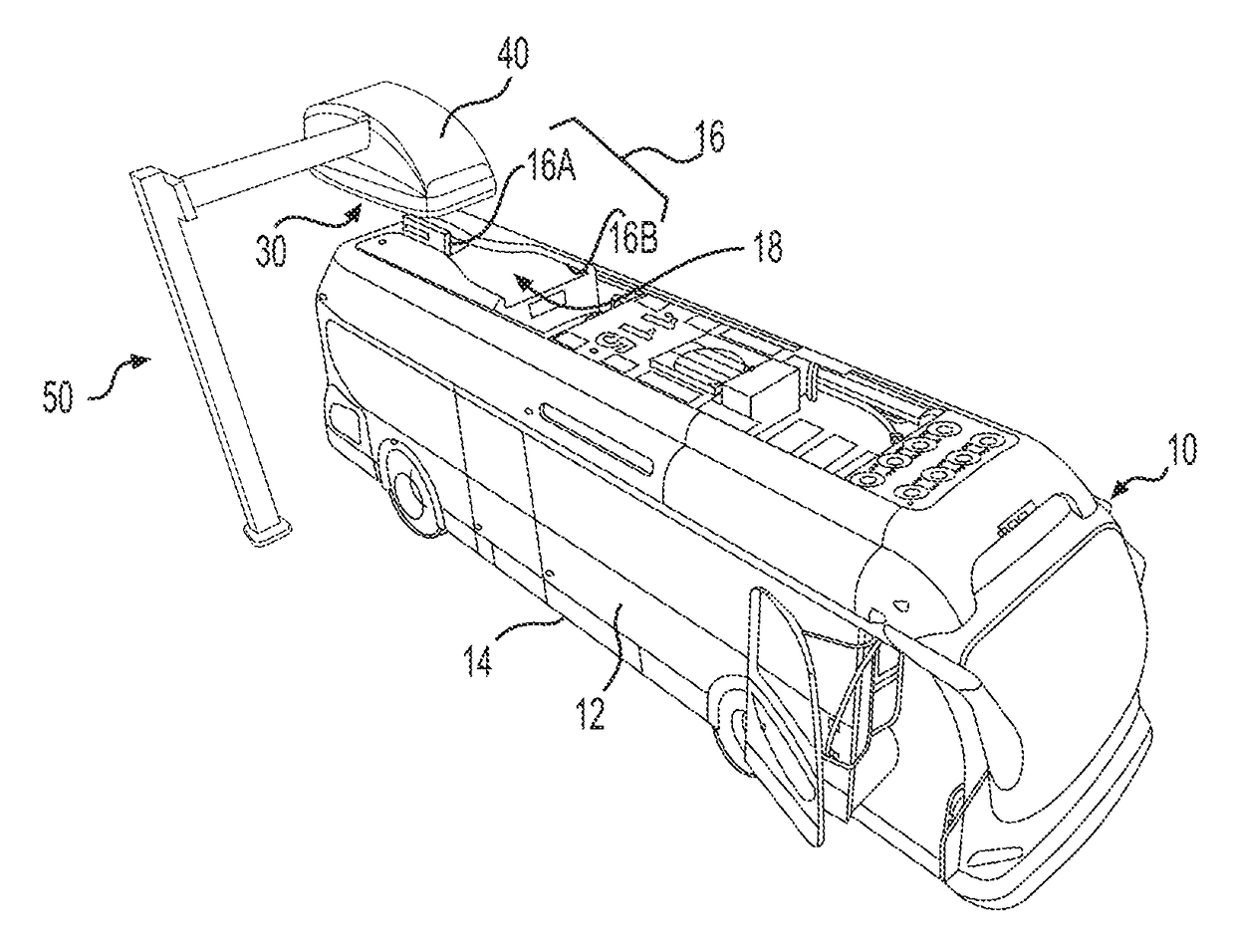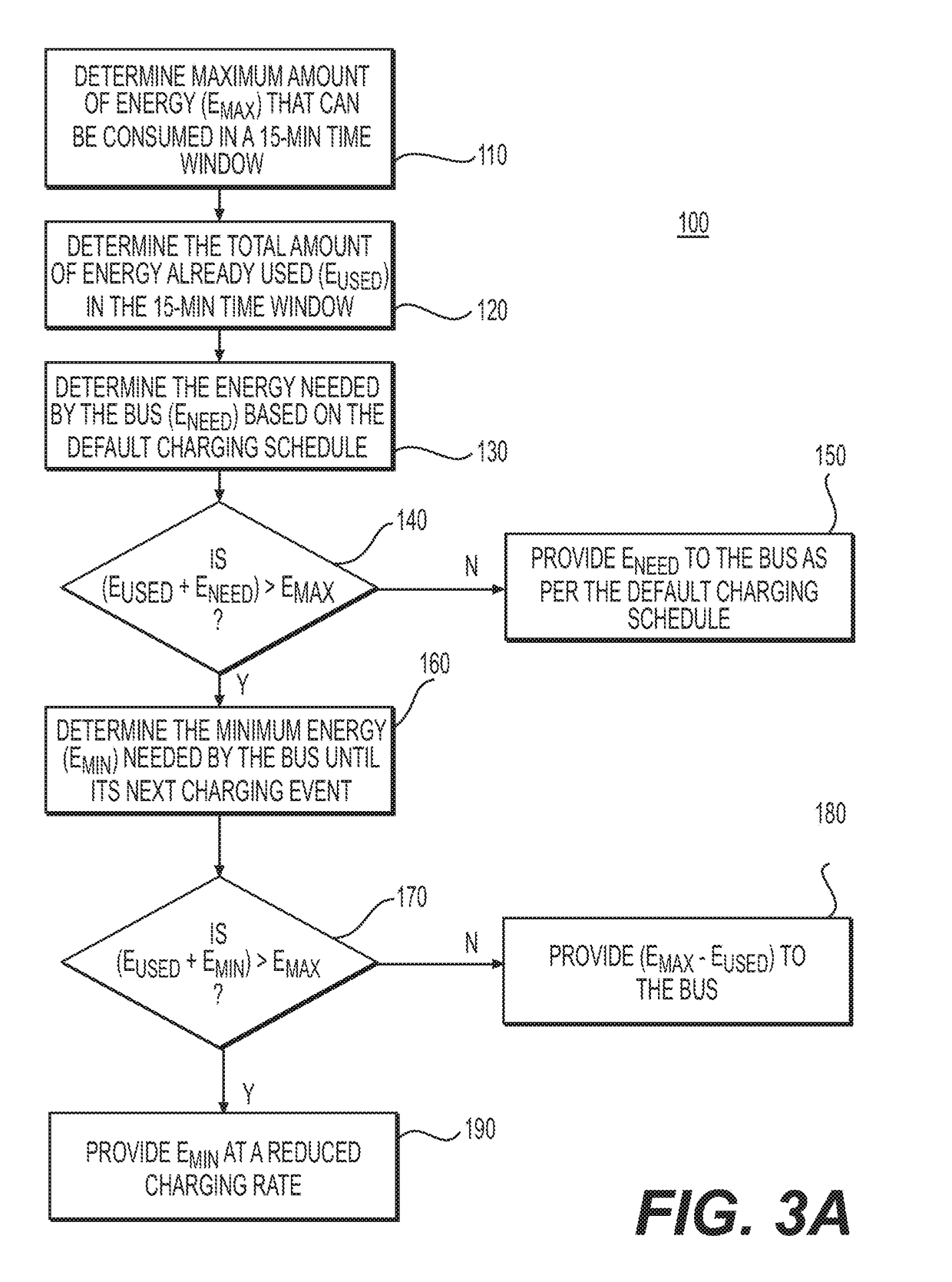Electric vehicle charging to reduce utility cost
a technology of electric vehicles and utility costs, applied in the field of electric vehicle charging systems and methods, can solve the problems of demand billing rate and energy consumption cost per unit of energy consumed by charging stations, and achieve the effect of not increasing demand billing ra
- Summary
- Abstract
- Description
- Claims
- Application Information
AI Technical Summary
Benefits of technology
Problems solved by technology
Method used
Image
Examples
Embodiment Construction
[0015]The present disclosure describes a control system and a method of controlling the charging of electric buses to reduce utility cost. While principles of the current disclosure are described with reference to an electric bus, it should be understood that the disclosure is not limited thereto. Rather, the systems and methods of the present disclosure may be used to control the charging of any electric vehicle (one or more taxis, etc.).
[0016]FIG. 1 illustrates an electric vehicle in the form of a low-floor electric bus 10. Electric bus 10 may include a body 12 enclosing a space for passengers. In some embodiments, some (or substantially all) parts of the body 12 may be fabricated using composite materials to reduce the weight of bus 10. As is known in the art, in a low-floor bus, there are no stairs at the front and / or the back doors of the bus. In such a bus, the floor is positioned close to the road surface to ease entry and exit into the bus. In some embodiments, the floor hei...
PUM
 Login to View More
Login to View More Abstract
Description
Claims
Application Information
 Login to View More
Login to View More - R&D
- Intellectual Property
- Life Sciences
- Materials
- Tech Scout
- Unparalleled Data Quality
- Higher Quality Content
- 60% Fewer Hallucinations
Browse by: Latest US Patents, China's latest patents, Technical Efficacy Thesaurus, Application Domain, Technology Topic, Popular Technical Reports.
© 2025 PatSnap. All rights reserved.Legal|Privacy policy|Modern Slavery Act Transparency Statement|Sitemap|About US| Contact US: help@patsnap.com



